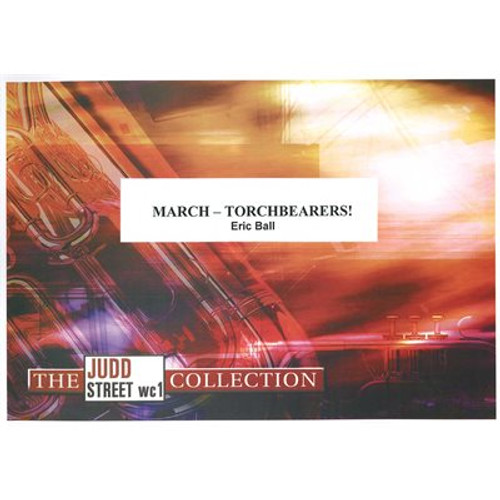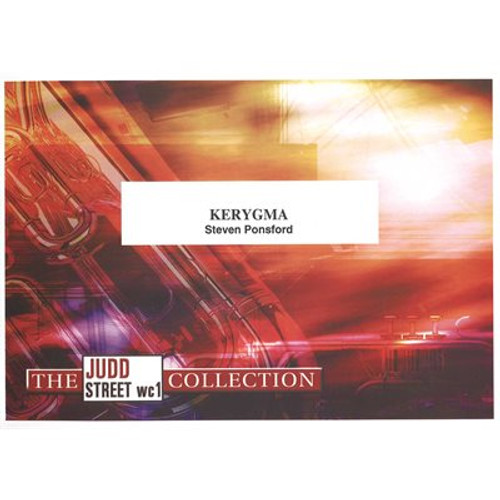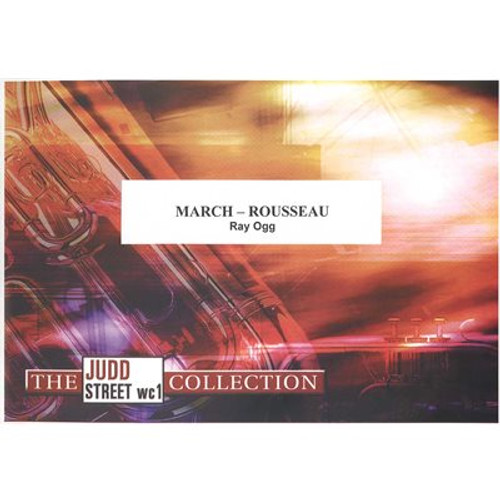Product Description
Comments by Lt.-Col (Dr) Ray Steadman-Allen, O.F.
Theme
The theme was published in The Musical Salvationist, March-April 1953. The title derives from the words associated with the melody when published: 'Thee will I love, my strength, my tower', a hymn by Johann Scheffler, translated by John Wesley. A strong modal flavor is characteristic of the theme. Where the Bass Eb departs from the bass part (between bars eight and fourteen), keep the Bass Bb a little stronger
Variation 1
This is a light and graceful movement with a good deal of imitative writing. Each 'line' should be confident and clear. This movement leads straight into the succeeding one.
Variation 2
Fire and ferocity are asked for in the course of this variation. Let there be no timidity, but a positive and brilliant attack throughout the band. Establish a three-in-a-bar pulse right from the start with a drive and verve which will communicate the requisite mood. Contrast is made in the first-time-bracket in Section F, but it is short-lived.
Variation 3
Apart from the obvious importance of the solo line with its arabesques and arpeggii, points to be considered in this variation are:In view of the general mood of the music, the fp indications should not be attacked savagely ᄀᆰ in fact, it was noted on the composer's original hand-written score that these effects should be 'rather gentle'.
- The recurring and overlapping figure encountered at the outset (1st Baritone, Solo Horn, 2nd Cornet and Soprano)
- The use of the Basses
- Interpolations in 'open harmony', as exemplified by the Trombones in the sixth bar of Section G
Variation 4
The fourth variation is a Passacaglia, which is a dance form (in triple-measure) originating in southern Europe. It was widely used by 17th and 18th century composers in the form of developed passages (amounting almost to variations) over a 'ground bass'. Although normally a triple-measure is used in this form, nevertheless there is historical precedent for its use in other measures. In this variation, the quadruple-measure is adopted, and the 'ground' given out at once by the Basses. A superstructure of varying pattern and intensity is then begun, with the 'ground bass' maintaining its steady progression throughout. Close attention to the construction will reveal the ingenuity with which fragments of the 'ground bass', plain or decorated, are combined and used in a number of ways. revealing the composer's mastery of contrapuntal technique.
At Section L, for instance, the 'ground bass' is inverted, imitated in a stretto-like manner, and set against the Trombones proceeding in the orthodox direction (in thirds). Before this combination is complete, the Euphoniums and Baritones begin a repeat of the Cornet inversion; halfway through this, Flugel and 2nd Cornet take up the same strain. So the music proceeds and is built up. Note in the ninth bar of this section how the Basses play the 'ground bass' in 'double-time' whilst the Trombones sound the inverted form against it in the normal note-values. Such analysis is strongly urged upon those who would teach this piece to their band; whilst it is agreed that a good performance can be obtained by reading the notes and general directions accurately, nevertheless and intelligent reading, which will bring musical satisfaction, is only attained by a grasp of the principles which lie beneath the notes.
Variation 5
All players must have their wits about them in this briskly-moving and scintillating final movement. Sudden variations of dynamic abound. The tempo is constant until Section Q is reached. Make the concluding bars full and convincing. (view series guide)
Produced by The Salvation Army, SP&S, UK













